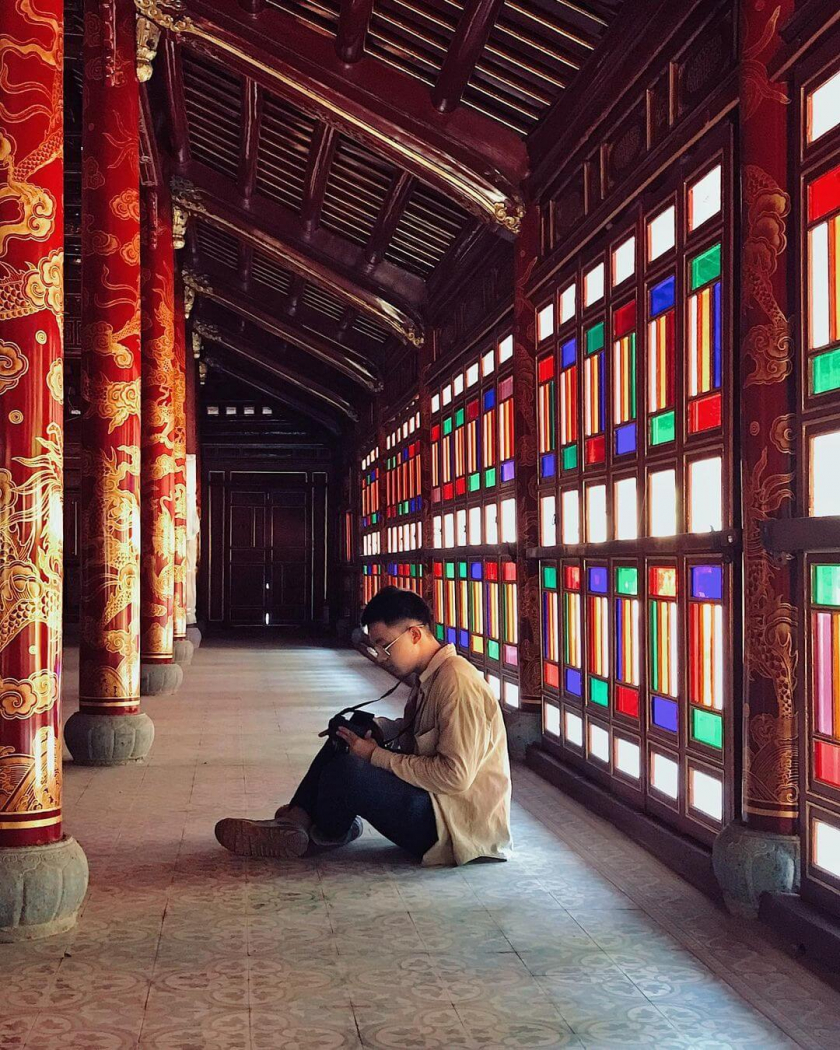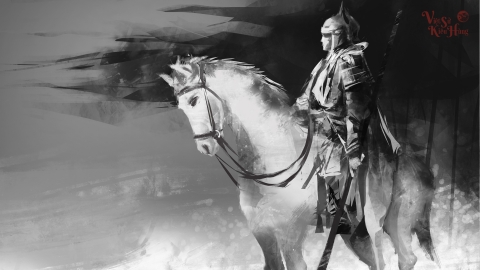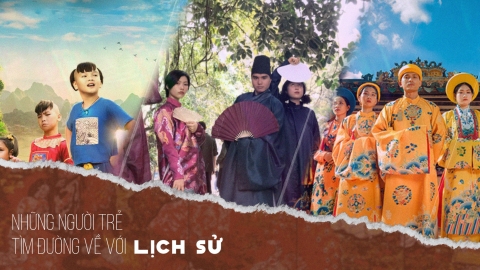Dong Khanh mausoleum was built over the first two centuries.
Dong Khanh Tomb is a relic in the Complex of Hue Monuments, also the tomb of the 9th king of the Nguyen Dynasty. Located between the tombs of Thieu Tri and Tu Duc, Dong Khanh Tomb is located in Cu Si village, Duong Xuan commune, now Thuong Hai village, Thuy Xuan commune, Hue city. On December 11, 1993, Dong Khanh Tomb was recognized by UNESCO as a World Cultural Heritage.

Dong Khanh mausoleum area - Photo: Internet
Initially, this mausoleum only had Truy Tu Palace, which King Dong Khanh assigned the Ministry of Public Works to start construction in February 1888, as a shrine to his father, Kien Thai Vuong. While the architectural work was still unfinished, the king suddenly fell ill and passed away. King Thanh Thai (1889-1907) succeeded to the throne in a context where the country was facing many difficulties and the economy was exhausted, so he could not build a proper mausoleum for the late king Dong Khanh. He had to change Truy Tu Palace to Ngung Hy Palace to serve as a shrine, while the mausoleum was simple. From then on, the mausoleum was given the Chinese name Tu Lang, at the same time as giving a posthumous name and temple name to King Dong Khanh.
In August 1916, King Khai Dinh, upon ascending the throne, ordered the temple to be repaired and his father's tomb to be built more completely. The entire mausoleum complex from Bai Dinh, Bi Dinh to Buu Thanh was rebuilt during this time, and was not completed until July 1917. Only Ngung Hy Temple, Ta and Huu Tung Vien and Ta and Huu Tung Tu continued to be repaired until 1923.
The construction of Dong Khanh Tomb took place over the first two centuries, lasting 35 years and under four different kings to complete.
The harmonious combination of ancient and modern architecture in Dong Khanh mausoleum
If Tu Duc tomb has traditional style,Khai Dinh TombWhile the latter clearly shows modern Western style, Dong Khanh mausoleum bears the mark of architectural fusion of both eras.
The entire Dong Khanh mausoleum complex has a layout divided into separate mausoleum axes and tomb axes such as Xuong Lang, Khiem Lang, Boi Lang, An Lang, etc. When renovating, King Khai Dinh made each area like that in a separate style.
Impregnation shaft
Due to being renovated from the old traditional architectural foundation, the shrine area of Dong Khanh Tomb was only expanded and decorated inside and outside. Most of the buildings here still have the typical double-arched architecture of the Nguyen Dynasty.
The interior space of Ngung Hy Palace is composed of three buildings connecting to two courtyards in the back garden, creating a large wooden architectural complex. The decoration uses the maximum quintessence of lacquer and gilded lacquer art; making the palace no longer feel like a shrine but as splendid and majestic as the main palaces in the Imperial Palace. In addition to the decorations of the four sacred animals and four seasons, Ngung Hy Palace also has 24 drawings of paintings of the story "Twenty-four filial piety", showing Khai Dinh's filial piety to Dong Khanh.

Stained glass windows like a Western cathedral in Tien Doanh Palace in Dong Khanh Mausoleum - Photo: barolaw
The exterior of the shrine is highlighted by terracotta reliefs on the cornices, ridges, and eaves; along with many rustic decorative motifs such as a profitable fisherman, fighting cocks, music, chess, poetry, wine, fruits, animals...
However, the appearance of a system of multi-colored glass doors at the front door of Tien Doanh Palace, two paintings depicting the Franco-Prussian War during the Napoleonic period, and a number of other artifacts have shown the influence of Western European culture in the architecture here.
Steering shaft
During the reign of Thanh Thai, the mausoleum could not be seriously repaired, so later, King Khai Dinh ascended the throne and ordered more construction and innovation in this area.

The stele in the mausoleum axis of Dong Khanh mausoleum - Photo: myjourneyoftheworld
The general structure of Dong Khanh mausoleum is not much different from other mausoleums: facing East - Southeast, with Thien Thai mountain as the front screen; Bai Dinh yard has rows of statues of mandarins, Tru Bieu, Bi Dinh, Buu Thanh according to tradition. But from architecture, decoration to construction materials, almost all are "Europeanized": tall and thin mandarin statues made of cement and brick instead of stone statues, ardoise tiles instead of coptis. In particular, Bi Dinh (where the stone stele is erected) has a Western Neoclassical architectural style mixed with traditional Asian style.
The combination of Western proportions with traditional construction at Dong Khanh mausoleum opened the way for a harmonious Western-Vietnamese royal architectural style, typical of the later Khai Dinh style.
More information
Opening hours: 7:30 am - 5:30 pm Monday to Sunday
Ticket price: 50,000 VND/trip/adult, free for children from 7-12 years old































